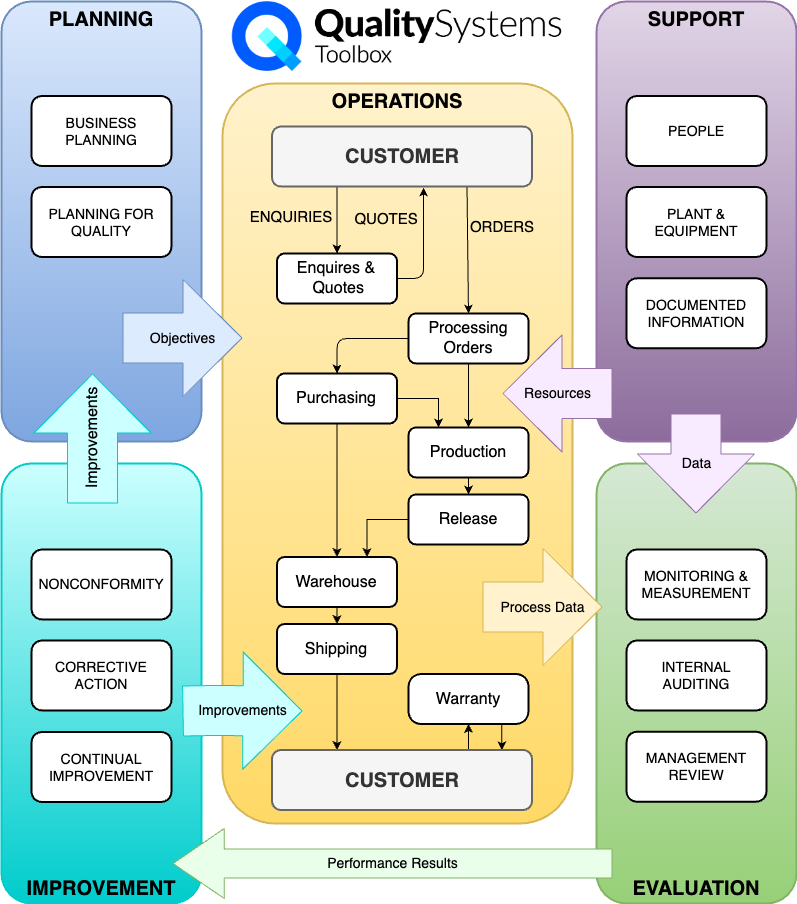Back to Learning Resources
Using Process Maps
A process map provides a top level overview of all the business processes and how they interact. Have a look at our example process map.
Tags:
What is a 'Process Map'?
A Process map is a diagram showing a sequence of processes or steps in a process.
It's a really good way to provide a high-level overview of the processes that make up your business management system.
An overview process map can help new staff get an idea of how your business works, helps your auditor quickly understand your management system, and will satisfy the requirement in clause 4.4 of any of the ISO management system standards for 'processes needed' and 'interactions'. The wording varies a bit between the standards - here's what is says in ISO 9001:
The organisation shall determine the processes needed for the quality management system and their application throughout the organisation, and shall ...
...
b) determine the sequence and interaction of these processes; ...
An example process map
The ISO 9001:2015 standard includes a generic model of a process-based quality management system based on the PDCA cycle(Plan - Do - Check - Act/Adjust). Our example process map follows a similar structure.
This example shows the processes in a simple manufacturing business. It can easily be modified for service based companies or expanded to include safety, environmental, or other compliance related processes.
Each box in the diagram corresponds to a business process.
The details for each process would be contained in other documents and you might have separate procedures for each process, or collect several together in one document - like an 'Operations Manual' for the centre 'Operations' section.

It's a bit like a pictorial version of the contents page of a quality manual (but better!).
A process map showing an overview of a management system will need to include:
- planning processes
- resource management - people, equipment, and infrastructure
- operations processes - purchasing from suppliers, work scheduling, production, customer services, subcontractor control, product delivery, service delivery, etc
- support processes - document control, records management, equipment calibration, training
- measurement, analysis and improvement - customer complaints, audits, corrective and preventive actions, system review.
You don't have to use process maps to be compliant with ISO 9001, but they are a very effective tool for the job.